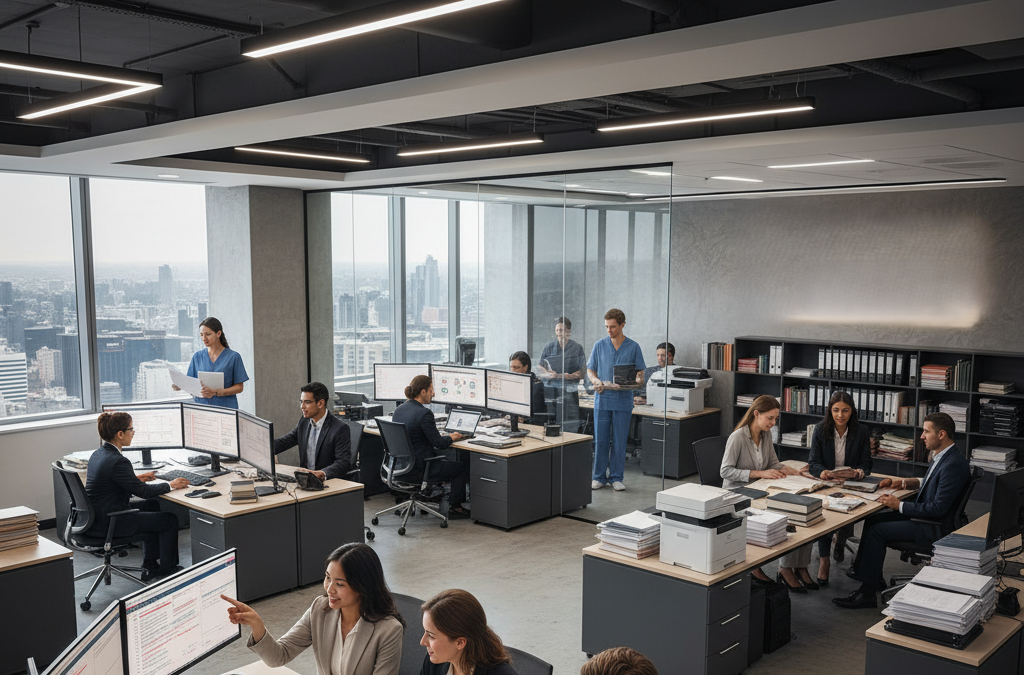- Resources
- The Rise of Body Cameras in Law Enforcement: Implications for Legal Cases
The Rise of Body Cameras in Law Enforcement: Implications for Legal Cases
February 14, 2024
The Rise of Body Cameras in Law Enforcement: Implications for Legal Cases In recent years, the use of body cameras by law enforcement has seen a remarkable increase. This technological advance has most simply transformed the landscape of policing, however, it has also added approximately tremendous changes in the way legal instances are investigated, prosecuted, and defended. The adoption of physical cameras has been hailed as a method to beautify transparency, duty, and overall public confidence in enforcement enterprises.
In this blog, we can discover the rise of body cameras in law enforcement and delve into the ways they achieve the results they have in prison cases.
Strengthening accountability and transparency:
One of the main reasons for the enormous adoption of physical cameras is the choice of accountability for growth and transparency in law enforcement activities. The use of body cameras presents an unfiltered and targeted set of interactions between officers and the general public. This in turn can reduce instances of misconduct and abuse as officials are aware that their actions are being documented.
In court cases, this documentary evidence acts as a valuable tool for both prosecution and defense. Footage obtained from frame cameras can provide a clear and true depiction of events and provide an unaltered point of view that can be compared to first-hand accounts. This unprocessed and unedited evidence becomes pivotal in ascertaining the truth of a matter, thereby influencing its final resolution.
Resolving Clashing Narratives:
Legal cases regularly involve conflicting stories presented with the help of unique parties involved. The use of frame cameras greatly reduces the likelihood of activity disputes arising during an incident. The recorded footage acts as a dispassionate observer and correctly depicts the events as they unfold. In conditions where disagreements occur regarding the approximate use of coercion or the conduct of police officers, dashcam footage becomes vital evidence. This can help decision-makers along with arbitrators, juries, and judges to make sound decisions based on concrete evidence instead of relying only on verbal recollections or conflicting reviews.
Building confidence in law enforcement:
The connection between law enforcement corporations and the communities they serve has traditionally been marked by pressure and suspicion. Embracing the implementation of frame cameras is seen as a proactive step to overcome these challenges, showing the strength of the will to be open and accountable. By witnessing the presence of body cameras on law enforcement officials, the general public can enjoy increased reassurance knowing that their movements are under regular scrutiny.
From a legal perspective, this increased trust has implications for jury perception. Jurors are more willing to state their assent as truthful to testimony and evidence provided by law enforcement while supporting video footage is available.
Challenges and controversies
The use of body cameras has the power to affect the credibility of evidence offered in a court case, possibly leading to a shift in the final results of a case. There are many challenges and controversies surrounding the adoption of body cameras. Although they have been introduced to fantastic adjustments, they are not without problems. One major concern is the issue of privacy, especially when it comes to recording people in personal areas or sensitive situations. Achieving the right balance between transparency and respect for individual privacy rights is an ongoing challenge for lawmakers and law enforcement.
In addition, there have been instances of officers intentionally or accidentally ignoring the activation of their body cameras in all major incidents. This raises doubts about the effectiveness of production in securing duty when it is not in continuous use. Addressing these challenges is necessary to fully exploit the potential benefits that frame cameras present in legal cases.
The Acceptance of Body Camera Clips in Court:
The acceptance of body camera clips as proof in court is a vital aspect that molds its influence on legal cases. Courts must establish explicit guidelines on how this footage can be utilized and under what circumstances it can be considered acceptable. Legal professionals must contend with inquiries surrounding the genuineness, dependability, and potential manipulation of body camera clips.
Furthermore, the understanding of body camera footage can be subjective, and its presentation in court may give rise to discussions about context and viewpoint. Lawyers may offer contrasting interpretations of the same footage to bolster their arguments. This underscores the significance of having a well-defined legal framework for the utilization of body camera footage in court proceedings.
Conclusion:
The emergence of body cameras in law enforcement suggests a fundamental change in the way prison cases are investigated and resolved. While these gadgets bring the possibility of greater transparency, accountability, and public trust, they also provide limitations on privacy, permanent use, and acceptance of courtroom images. Achieving a delicate balance is essential to ensure that body cameras satisfy their purported purpose while respecting the rights of individuals.
As technology advances, the role of body cameras in criminal reporting will continue to evolve just as well. Legislators, law enforcement, and legal professionals must work together to create comprehensive frameworks that benefit from the blessings of this technology, while also addressing its inherent challenges. The rise of body cameras is reshaping the prison landscape, and its consequences can be felt permanently.
The utilization of the allied outsourcing in the legal field has emerged as a strategic solution that complements the transformative effect of body cameras in law enforcement. With legal cases increasingly depending on the careful examination of body camera footage, the delegation of legal services to the allied professionals ensures a comprehensive and efficient method for managing the surge of data. Specialized crime outsourcing corporations that focus on evidence evaluation, transcription, and contextual interpretation of digital camera images can play a vital role in assisting prison teams.
By leveraging the knowledge of these associated outsourcing services, law firms, and authorities, companies can streamline the process of preparing instances for trial and ultimately improve the quality and reliability of evidence presented in court filings. This collaborative method allows criminology professionals to focus on subtle prison arguments and interpretations, stable within the accuracy and thoroughness of digital camera footage evaluation provided through specialized outsourcing companions.
To know more, reach out to: https://thealliedoutsourcing.comcontact/
All Categories
- Agile Legal Support (1)
- Case Law (88)
- Case Studies (6)
- Demand Letter (14)
- Deposition Summaries (11)
- Legal Outsourcing (3)
- Legal Research (72)
- Marketing (1)
- Medical Summaries (14)
- Others (4)
- Personal Injury (54)
- Virtual Assistant (59)
- Virtual Paralegal (2)
Related Blogs
Recent Blogs




